- عنوان کتاب: Dental Pulp Derived Mesenchymal Stromal Cells, Second Edition
- نویسنده: Sibel Yildirim
- حوزه: دندانپزشکی
- سال انتشار: 2025
- تعداد صفحه: 207
- زبان اصلی: انگلیسی
- نوع فایل: pdf
- حجم فایل: 4.29 مگابایت
رودولف ویرشو در سال ۱۸۵۸ میگوید: «هر حیوانی به عنوان مجموعهای از واحدهای حیاتی به نظر میرسد که هر یک از آنها ویژگیهای کامل حیات را در خود جای داده است.» بیش از یک قرن و نیم از زمانی که این کلمات گفته شد میگذرد و علم، به اصطلاح، سلول را تا ریزترین اجزای آن تشریح کرده است. پیشرفتهای حاصلشده در پزشکی همزمان قابل توجه و بهشدت ناکافی است. ما انتظار داریم که پیشرفت مداوم در زمینههایی مانند میکروسکوپی، مولتی-اُمیکس، ویرایش ژن CRISPR/Cas9، ارگانوئیدها، سیستمهای اندام روی تراشه، مهندسی اپیژنتیک، یادگیری ماشین و سایر فناوریها، درک ما را از فرآیندهای مولکولی دخیل در برنامهریزی مجدد سلولهای سوماتیک به سلولهای پرتوان و تمایز سلولهای بنیادی پرتوان القایی (iPSCs) به انواع سلولهای خاص، عمیقتر کند. با این حال، تنها کسانی که در این حوزه فعالیت دارند، معمولاً اکتشافات کلیدی در زیستشناسی سلولی را تشخیص میدهند. پس از کشف و جداسازی سلولهای بنیادی از بافتهای انسانی، تولید iPSCها به عنوان یکی از پیشگامانهترین پیشرفتها مطرح است. علیرغم اکتشافات پیشگامانه متعدد در زیستشناسی که در مجلات با ضریب تأثیر بالا منتشر شدهاند، بسیاری از آنها حتی به طور موقت تأثیر قابل توجهی بر جامعه نداشتهاند یا تأثیر بسیار کمی داشتهاند. برای مثال، تحقیقات نشان داده است که میکرو RNA های گیاهی میتوانند از طریق مصرف غذا به خون و بافتهای میزبان مهاجرت کنند. این نشان میدهد که «مصرف مواد» ممکن است شامل «مصرف اطلاعات» نیز باشد، که از مفهوم تنظیم اپیژنتیک پشتیبانی میکند. علاوه بر این، دینامیک غیرخطی، سرنوشت سلولهای بنیادی را روشن میکند و همافزایی بین ریاضیات و زیستشناسی سلولی را برجسته میسازد. با وجود این و دیگر اکتشافات مهم، پیامدهای اجتماعی گستردهتر آنها به طور کامل شناخته نشده است. پوشش رسانهای تحقیقات و توسعه سلولهای بنیادی رو به افزایش است، و تقریباً روزی نیست که تیتر خبری در این مورد نباشد. متأسفانه، این توجه شدید رسانهها اغلب تمایز بین واقعیت و خیال را مبهم میکند. ایجاد اندامهای زیستی و درمانهای معجزهآسا برای سرطان و سایر بیماریهای وخیم، اغلب در اخبار روزانه مطرح میشوند. به همین ترتیب، بسیاری از دندانپزشکان ایجاد دندانهای زیستی با کمک سلولهای بنیادی را در نظر دارند. با این حال، تمرکز اصلی این کتاب این نیست که آیا سلولهای بنیادی دندان میتوانند دندان تولید کنند یا خیر، بلکه چالشهای مهمی است که در زمینه تحقیقات سلولهای بنیادی دندان باقی مانده است. هزینههای گزاف مرتبط با آموزش دندانپزشکی اغلب متخصصان دندانپزشکی را مجبور میکند که بلافاصله پس از فارغالتحصیلی به دنبال موقعیتهای شغلی پردرآمد باشند. این فشار مالی عامل مهمی در کمبود اکتشافات مرتبط با دندان است، زیرا تعداد جراحان دندان با مدارک دکترا، به ویژه در کشورهای در حال توسعه، رو به کاهش است. علاوه بر این، در مقایسه با اواخر قرن هجدهم و اوایل قرن نوزدهم، علوم پایه دندانپزشکی محبوبیت خود را در سراسر جهان از دست دادهاند. دندان و محیط دهانی اطراف آن یکی از پیچیدهترین و تطبیقپذیرترین سیستمهای بدن انسان را تشکیل میدهند. دندانها باید در برابر حمله مداوم باکتریها از حفره دهان مقاومت کنند، نوسانات شدید دما را تحمل کنند و در حین جویدن، نیروهای قابل توجهی را تحمل کنند. بافت مزانشیمی بسیار تخصصی، یعنی پالپ دندان، درون بافت عاج سفت و معدنی شده قرار گرفته است. این کمپلکس پالپ دنتین، یک اندام یکپارچه را تشکیل میدهد که با تعاملات منحصر به فرد بین بافتهای معدنی و نرم، با ظرفیت بازسازی قابل توجه، مشخص میشود. علیرغم اندازه کوچکش، این اندام عاج-پالپ، دامنه وسیعی برای تحقیق در زمینههایی مانند توسعه، تمایز، بازسازی، تنظیم ایمنی/تعدیل ایمنی، اپی ژنتیک، ژنومیک، پروتئومیکس و موارد دیگر ارائه میدهد. دندانهای دائمی و شیری که معمولاً پس از کشیدن دور انداخته میشوند، باید برای این مطالعات در نظر گرفته شوند، زیرا از نظر اخلاقی و سیاسی، بافتهای انسانی غیرقابل بحثی هستند. علاوه بر این، میتوان آنها را به صورت غیرتهاجمی به دست آورد. سلولهای پالپ دندان به راحتی مواد مناسبی را برای مطالعه جنبههای مختلف زیستشناسی سلولی، از جمله کاربردهای بالینی، فراهم میکنند. من از فرصتی که در طول دوران حرفهایام با ذهنهای درخشان زیادی کار کردهام، سپاسگزارم. و در آخر، از معمر ساغلام به خاطر شعلهای خاموشنشدنی که به من هدیه داد و به خاطر عشق بیقید و شرطش که مرا در یافتن راه منحصر به فردم هدایت کرد، سپاسگزارم. من ناگزیرم تاسف خود را از مشاهدهی بیگانگی فزایندهی ملتم، که به دلیل منحصر به فرد بودن چندوجهیاش متمایز است، از حوزههای پژوهش علمی و بیان هنری ابراز کنم. همزمان، من سرشار از تحسین برای پیگیری بیوقفه و ایمان تزلزلناپذیر به میراث ترکیه آتاتورک هستم که توسط جامعه علمی کشورم، علیرغم مواجهه با چالشهای قابل توجه و حمایت محدود، به نمایش گذاشته شده است.
“Every animal appears as a sum of vital units, each of which bears in itself the complete characteristics of life,” says Rudolf Virchow in 1858. More than a century and a half has passed since these words were uttered, and science has dissected the cell, so to speak, down to its most minute components. The progress made in medicine is simultaneously remarkable and severely inadequate. We expect that continued progress in fields like microscopy, multi-omics, CRISPR/Cas9 gene editing, organoids, organ-on-chip systems, epigenetic engineering, machine learning, and other technologies will deepen our understanding of the molecular processes involved in reprogramming somatic cells into pluripotent cells and differentiating induced pluripotent stem cells (iPSCs) into specific cell types. However, only those in the field commonly recognize key discoveries in cell biology. Subsequent to the discovery and isolation of stem cells from human tissues, the generation of iPSCs stands as one of the most groundbreaking advancements. Despite numerous groundbreaking discoveries in biology published in high-impact journals, many have had little or no discernible impact on society, even temporarily. For instance, research has demonstrated that plant microRNAs can migrate into a host’s blood and tissues through the consumption of food. This suggests that “consuming material” may also involve “consuming information,” supporting the concept of epigenetic regulation. Furthermore, nonlinear dynamics are shedding light on stem cell fates, highlighting the synergy between mathematics and cell biology. Despite these and other significant discoveries, their broader societal implications have not been fully recognized. Media coverage of stem cell research and development is proliferating, with hardly a day passing without news headlines on the topic. Unfortunately, this intense media attention often obscures the distinction between fact and fiction. The creation of bio-organs and miraculous cures for cancer and other critical diseases are frequently featured in daily news. Similarly, many dental practitioners envision the creation of bio-teeth with the aid of stem cells. However, the primary focus of this book is not whether dental stem cells can generate a tooth but rather the significant challenges that remain within the field of dental stem cell research. The exorbitant costs associated with dental education often compel dental professionals to seek high-paying positions immediately upon graduation. This financial pressure is a significant factor contributing to the scarcity of tooth-related discoveries, as the number of dental surgeons with PhD qualifications is declining, particularly in developing countries. Moreover, compared to the late eighteenth and early nineteenth centuries, basic dental sciences have lost popularity worldwide. The tooth and its surrounding oral environment constitute one of the most intricate and adaptive systems within the human body. Teeth must withstand constant bacterial assault from the oral cavity, tolerate extreme temperature fluctuations, and endure substantial forces during mastication. The highly specialized mesenchymal tissue, dental pulp, is encased within the rigid, mineralized dentin tissue. This pulpdentin complex forms an integrated organ characterized by unique interactions between mineralized and soft tissues, with a remarkable regenerative capacity. Despite its small size, the dentin-pulp organ offers a vast scope for research in fields such as development, differentiation, regeneration, immunoregulation/immunomodulation, epigenetics, genomics, proteomics, and others. Routinely discarded after extraction, permanent and exfoliated primary teeth should be considered for these studies as they are ethically and politically uncontroversial human tissues. Moreover, they can be obtained noninvasively. Dental pulp cells readily provide suitable material for studying various aspects of cell biology, including clinical applications. I am grateful for the opportunity to have worked with so many brilliant minds throughout my career. And last but not least, thanks to Muammer Saglam for giving me an unquenchable flambeau and for his unconditional love that guided me to find my unique way. I am compelled to express my sorrow at witnessing the progressive estrangement of my nation, distinguished by its multifaceted uniqueness, from the domains of scientific inquiry and artistic expression. Concurrently, I am filled with admiration for the relentless pursuit and unwavering faith in the legacy of Atatürk’s Turkey exhibited by my country’s scientific community, despite facing considerable challenges and limited support.
این کتاب را میتوانید از لینک زیر بصورت رایگان دانلود کنید:
Download: Dental Pulp Derived Mesenchymal Stromal Cells Second Edition



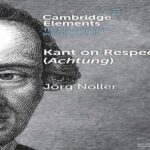



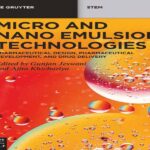


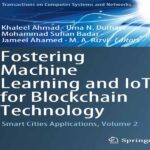
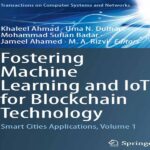

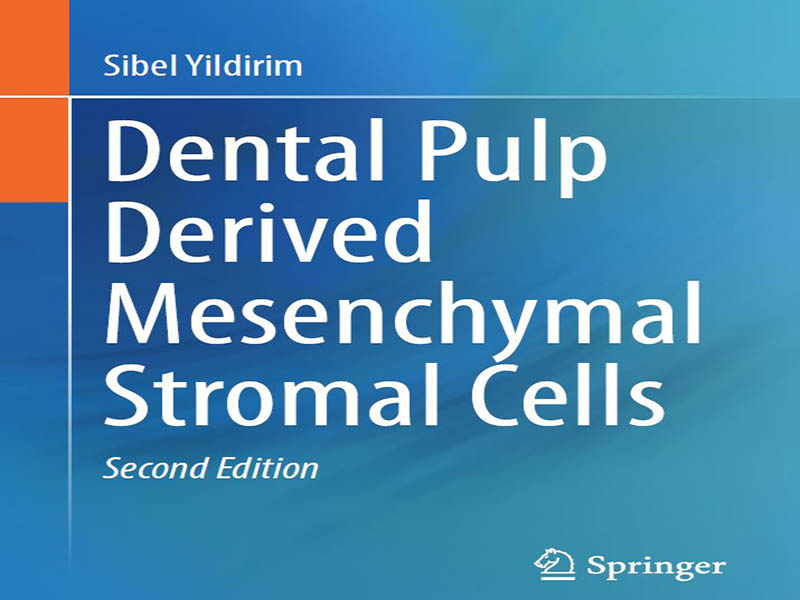






















نظرات کاربران